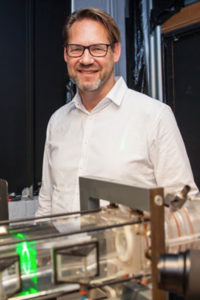
TU Delft, The Netherlands
A new look at turbulence — modern optical techniques for turbulent flows
Particle image velocimetry (PIV) has evolved to be the dominant method for velocimetry in experimental fluid mechanics and has contributed to many advances in our understanding of turbulent and complex flows. We review the achievements of PIV and its latest implementations: tomographic PIV for the capture of fully resolved volumetric data. The principal advantage of using experimental approaches over numerical approaches, such as direct numerical simulation, is that experimental methods can be used for complex flow geometries and avoids the use on unrealistic boundary conditions. In combination with another optical technique, so-called laser-induced fluorescence, it is possible to investigate the dispersion of a solute, representing for example pollutants, over complex terrain. As an example recent results on a model study of the dispersion of pollutants in urban areas is presented.
Short Biography
Jerry Westerweel (1964- ) studied applied physics at the Delft University of Technology. He obtained his Ph.D. in 1993 under supervision of Frans Nieuwstadt. As a Research Fellow with the Royal Dutch Academy for Arts and Sciences he worked at Stanford University, the California Institute of Technology, and the University of Illinois at Urbana-Champaign. He became an Anthony van Leeuwenhoek professor at the Delft University of Technology in 2002, and leads the Fluid Mechanics section since 2005. His scientific interests are turbulence and coherent flow structures, and optical measurement techniques for quantitative measurements in flows. Other interests are dispersed multiphase flows, microfluidics, biological flows and fluid mechanics of sports. He is one of the editors-in-chief for Experiments in Fluids.